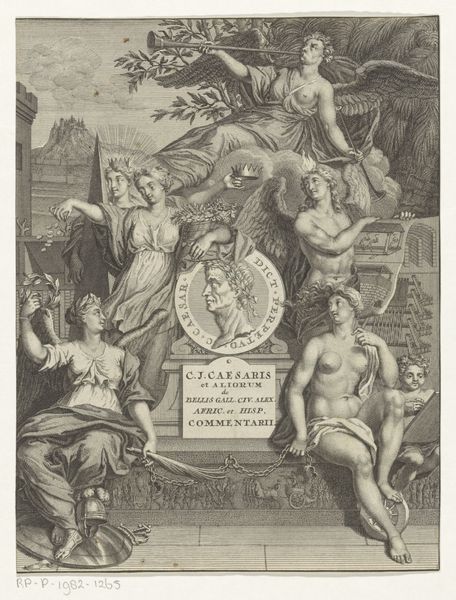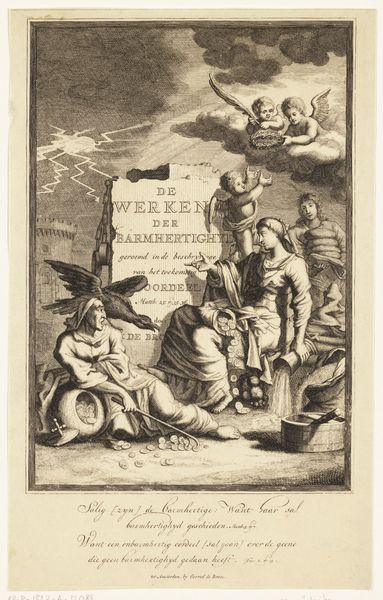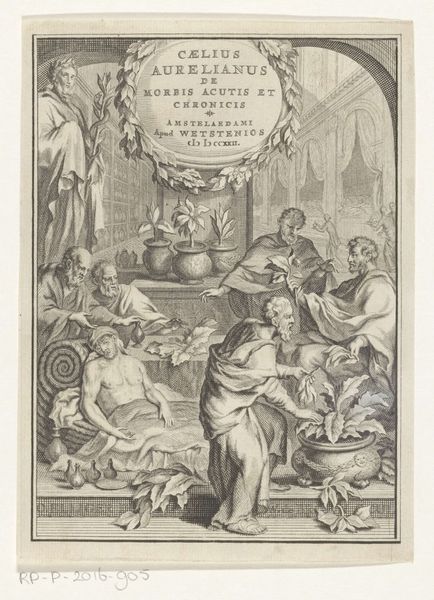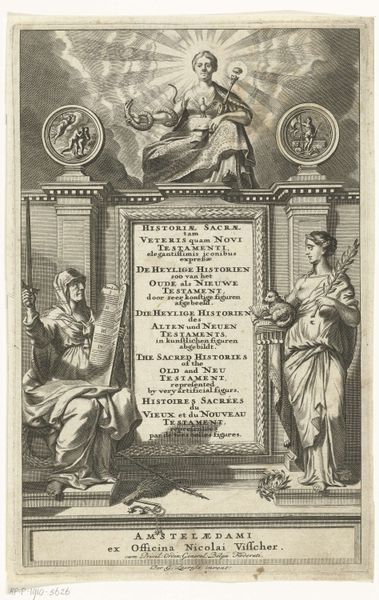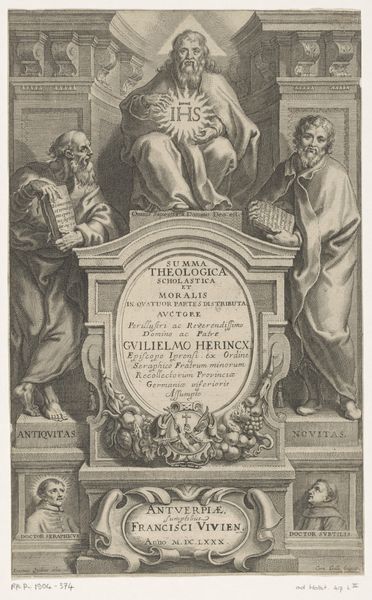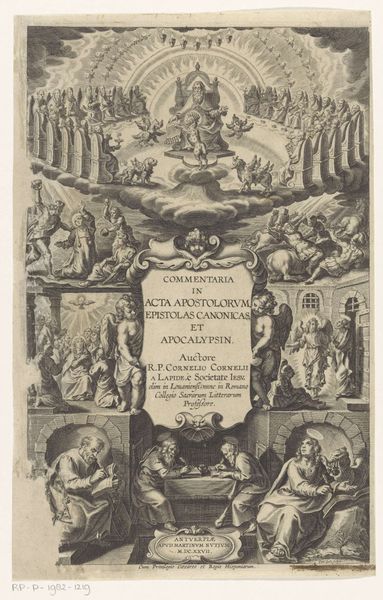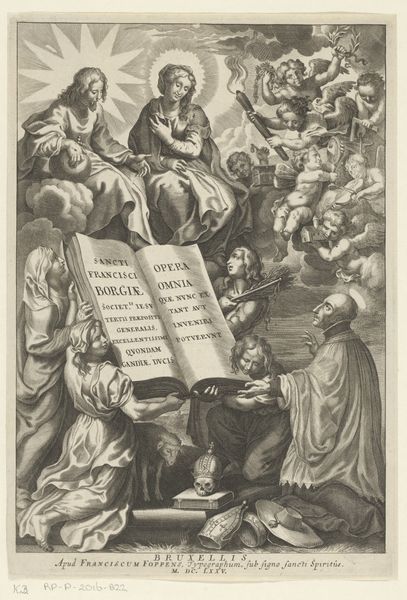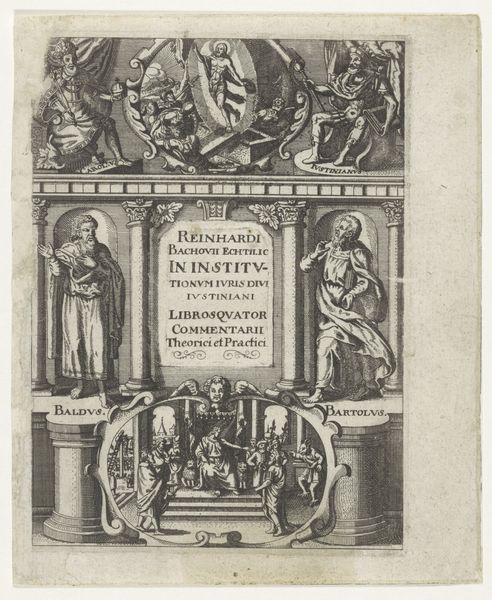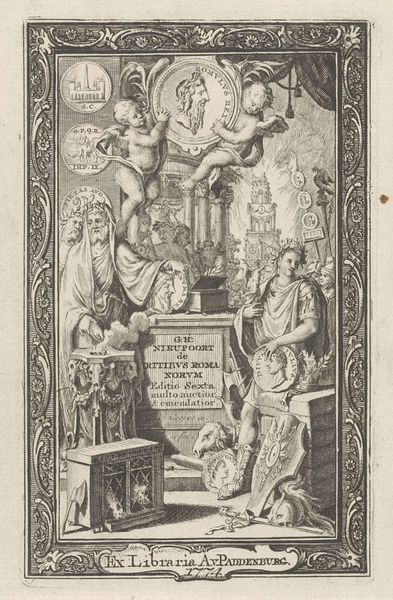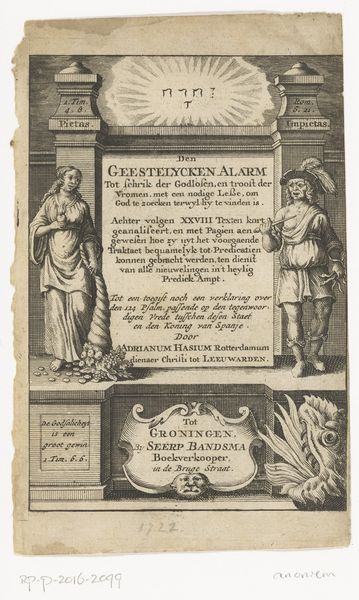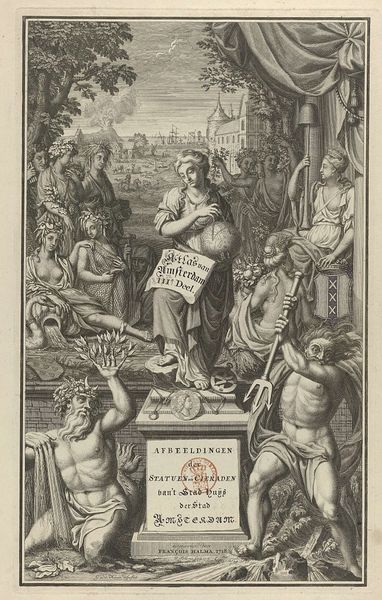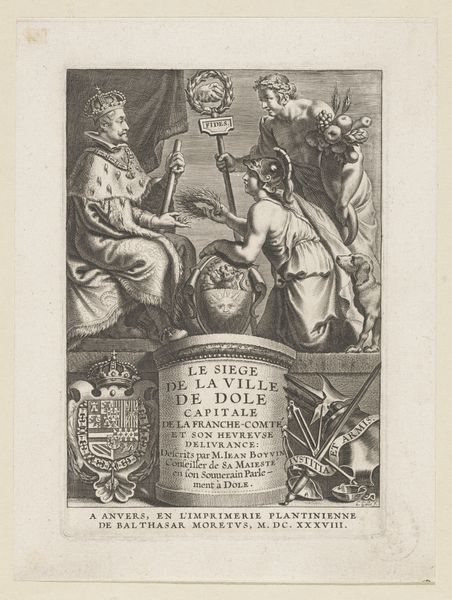
print, engraving
#
baroque
# print
#
landscape
#
cityscape
#
history-painting
#
engraving
Dimensions: height 194 mm, width 144 mm
Copyright: Rijks Museum: Open Domain
This print, made in Amsterdam in 1635, depicts Heraclitus and Democritus leaning on a globe. Note the contrast: Heraclitus, the weeping philosopher, embodies melancholy, while Democritus, the laughing philosopher, represents levity. The globe here symbolizes the world, a stage for human folly. This symbolism echoes across time, appearing in ancient Roman floor mosaics, where similar figures contemplate the absurdity of human existence. These contrasting figures invite the viewer to consider the polarities of human experience—joy and sorrow, wisdom and folly—recurring themes in our collective consciousness. Consider the emotional weight of these figures. Heraclitus's sorrow, echoed in countless depictions of mourning across cultures, touches a primal chord within us. Similarly, Democritus’s laughter, while joyous, hints at a deeper, perhaps unsettling, recognition of life's absurdity. Through these archetypes, the print resonates, engaging viewers on a subconscious level. Observe how the imagery of weeping and laughing, representing fundamental aspects of the human condition, cyclically resurfaces, evolving, yet retaining its emotional power.
Comments
No comments
Be the first to comment and join the conversation on the ultimate creative platform.
